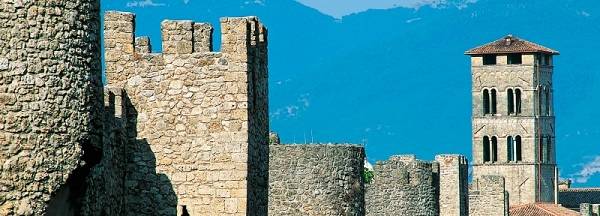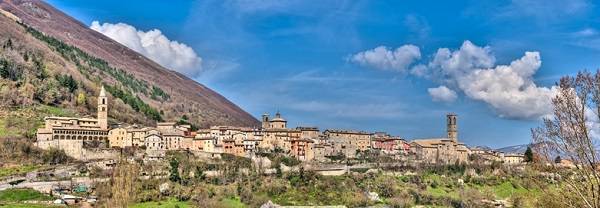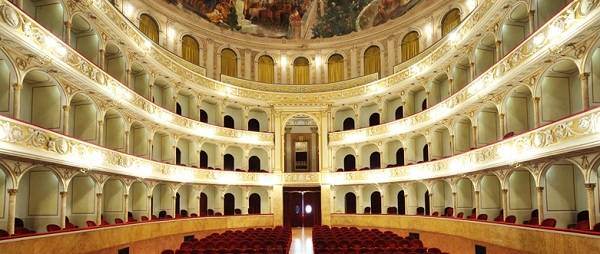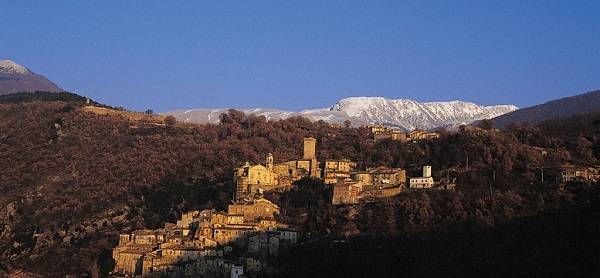Lazio is the region of the Eternal City of Rome, but it is also a region to discover and rediscover. For this we recommend that you dedicate a few days to discover the other provinces of the region, starting with Rieti.
Rieti

Formerly called Reate, the city of Rieti rises on a small hill overlooking a large flat area at the foot of Mount Terminillo, crossed by the river Velino. The historical tradition defines Rieti as Umbilicus Italiae (navel of Italy). The city, rich in fascinating historical vestiges, is enclosed by an almost intact wall and is reknowned all over the world for its gliding. The visits to the underground of Rieti are particularly interesting. Some important Franciscan sanctuaries are found near Rieti, hence the name of Valle Santa.
The city presents itself as a small town of great tranquillity, but endowed with some excellencies that make it interesting, especially if it is inserted in an itinerary covering all of the province. The importance of the religious factor is remarkable, since the city can count on the presence of two of the four Franciscan sanctuaries, that of Fonte Colombo and La Foresta, and is in close proximity with the other two, located in the neighbouring municipalities of Greccio and Poggio Buston. In fact, many pilgrims arrive in the “Holy Valley” to retrace, with the Voyage of Francis (Cammino di Francesco), the deeds and moments of the life of Saint Francis of Assisi.
The historical center of the city is very characteristic, placed on a small hill on the edge of the valley of Reate, protected on one side by a wall of medieval origin, mostly still intact and well preserved. Via Roma, one of the most active of the centre, divides the city in the medieval districts of San Francesco, San Rufus, Della Verdura and Santa Lucia.
Labro

Labro is a beautiful, fully renovated medieval village overlooking, on one side, the panorama of Lake Piediluco, along the road that connects Rieti to Terni, and on the other side the massif of Mount Terminillo. Labro, with its fan shape, is located on a hill overlooking the valley of Fuscello andthe lake of Piediluco, while behind it stands the Terminillo chain of mountains. Tourists, strolling through the winding streets of Labro, will enjoy these landscapes of lakes and mountains, while windows open suddenly between the stone houses and the belvedere located at the top of the village.
The origin of the name of the village is uncertain: for some, it derives from the Latin “Aper, Aprum” – wild boar. According to a legend, the first fortress of Labro was built by a patrician, Mr. De’Nobili, who, on the occasion of a hunting trip, made a promise to build a castle on the spot where he killed his first boar. And, almost in memory of the fact, even today, the coat of arms of the area bears the image of a boar under an oak tree. According to others, and this seems to be the most likely hypothesis, the name Labro is a derivation of “lavabrum“, which means in Latin “bath, basin”: because of the proximity of the village to Lake Piediluco, at the time much more extensive, on the edge of which the village would come to be in ancient times.
Farfa and its Abbey

Immersed in the heart of Sabina, only 40 km from Rome, the splendid seat of the Benedictine community of Farfa is a true oasis of peace and spirituality. The abbey of Farfa, declared a national monument in 1928, rises on the slopes of Mount Acuziano, in the mystical silence of green woods and olive groves. The enchantment of the Sabino landscape is a setting for a true historical, artistic and architectural gem, where the vicissitudes of more than fifteen centuries of history have succeeded, giving the monastery and the small village close to its walls, a timeless fascination. Guided tours of the abbey are offered, which lead the visitor to the most important places of the complex: the splendid Basilica of Santa Maria, the ancient Torre Campanaria, the State Library annexed to the monument, rich in ancient and incunabula manuscripts, the Cloisters and the Archaeological Museum, where the most striking phases of the life of the abbey are reconstituted.

